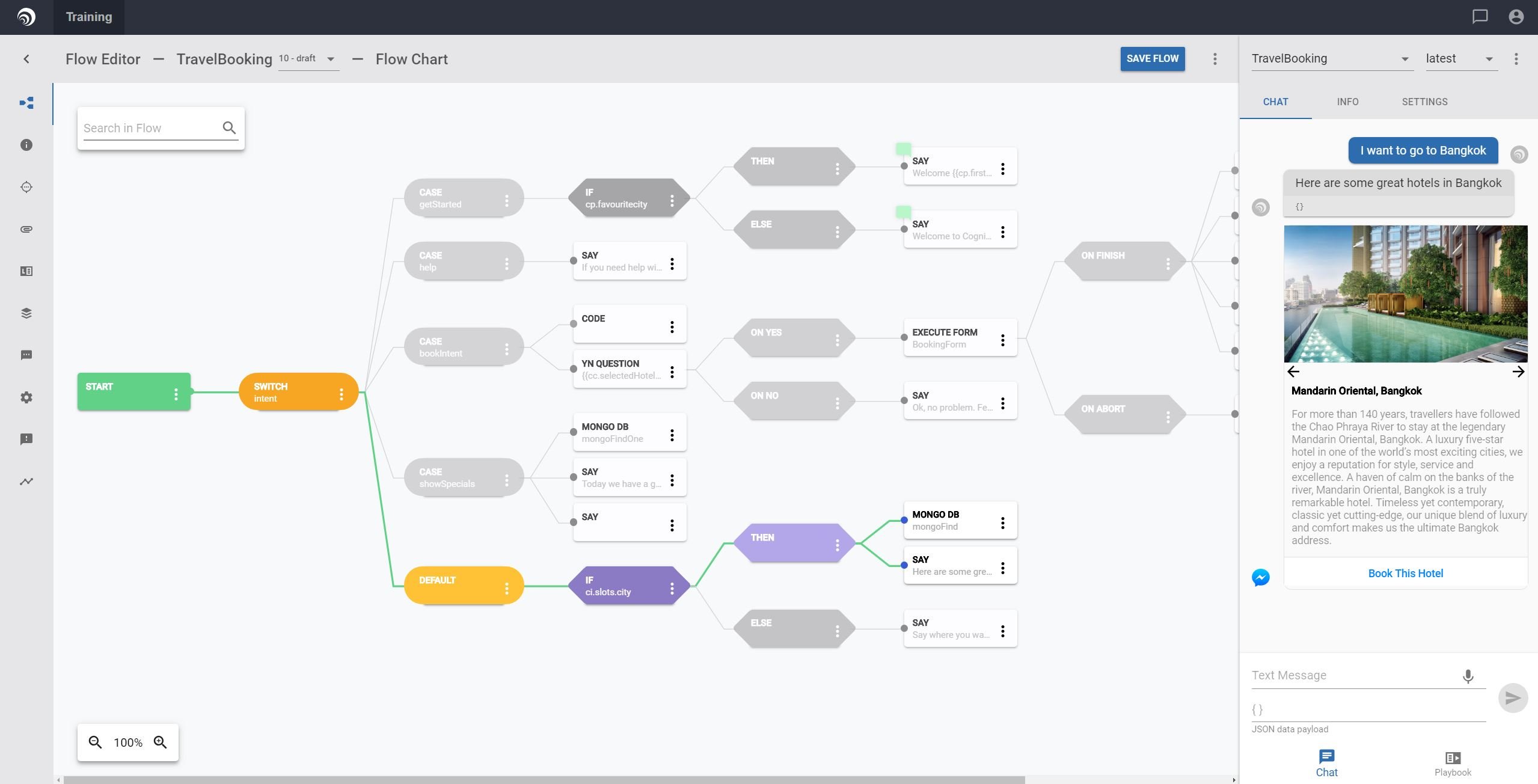Today we're proudly announcing the release of Cognigy.AI 3.0. After months and months of hard work, we're finally ready to show our partners, customers and prospects what we have built.
The Challenge
Cognigy AI 2.7, released earlier this year, is a fully-powered conversation editor which allows users to create advanced conversational AIs. It is the only tool that strikes a perfect balance between visual programming – something we push further than anyone in the market – and coding. Our proof of this is in the productivity our partners and customers achieve with Cognigy while implementing solutions that vary greatly in their complexity.
In developing Cognigy.AI 3.0, we wanted to lead with our ideas while carefully listening to the market. We talked with our customers and partners and decided on four focus areas:
- Scalability Requirements
Our customers' solutions need to scale with rapidly-changing demands, sometimes moving from 5 active users to 10,000 active users in a matter of minutes. - Security Requirements
Enterprises run projects in different departments with many employees at the same time. A solid security mechanism was needed to control who can see and do what in the system, all the while leveraging existing security infrastructure, such as single-sign-on. - Integration Requirements
Bots built in the enterprise don't live on their own. They consume data from external sources, trigger updates in third-party systems or even use existing, third-party NLP services. In addition, conversational AIs are deployed on a multitude of channels and integration needed to be as easy and flawless as possible. - Tool Requirements
Marketers and customer service representatives are used to features like personalization, profiles, and forms from other tools and channels like digital marketing tools and CRM .They need them in conversational AI as well.
Our Solution
Implementing these requirements meant that Cognigy would evolve from a first-class NLP and conversational editor to a tool truly built for the Enterprise. Five months later, we're finally ready to present Cognigy.AI 3.0, which not just tackles, but excels at delivering on the goals we've set. We're calling it the Enterprise Conversational AI Platform.
- Enterprise Scalability
We rewrote our software's foundations from scratch, moving to a true microservices model that scales without limits based on standard technology like Docker and Kubernetes. This change, while very technical in nature, delivers unparalleled scalability and resilience to our software, whether used as Cognigy.AI SaaS or On-Premise. - Enterprise Security
We introduced the concept of Projects, in which all resources for Conversational AIs (NLP, Flows, Lexicons, etc) are organized. Access to projects and actions within a project (e.g. read a Flow, update a lexicon, etc) are controlled by a granular, hierarchical role-based access control system, which can be integrated with existing authentication infrastructure. - Enterprise Integration
We rebuilt our MongoDB, SQL Server and HTTP service integrations from scratch. Database management now happens project-wide, along with management of third-party NLP connectors (e.g. Google Dialogflow, Alexa, Microsoft LUIS).
In addition, we introduced the concept of channel-specific endpoints. Supporting many standard channels (e.g. Messenger, Alexa, Google Actions, Slack, Webchat, REST, Socket, Webhooks, etc), Endpoints allow our customers to securely test new versions of the Conversational AIs before pushing them live.
We also made all Cognigy.AI functions available through a secure API, meaning everything from creating Flows to filling Lexicons to configuring Endpoints can be done via the API. - Enterprise Tools
This is the most visible change and it would take too long to mention all the new tools here, so let me concentrate on a number of highlights: - New UI
We completely revamped the UI, taking into account a ton of user feedback to make creating and managing Conversational AIs even easier.
- Contact Profiles, Personalization & GDPR
We enabled the collection of persistent user information, enabling 1:1 personalization of conversations, based on existing customer data. All this is achieved through the combination of Contact Profiles and new tools in the Flow Editor.
With the rollout of GDPR, we had to make sure that while we're giving our customers powerful tools to drive conversational marketing, our software would also allow them to stay compliant. Thus we introduced a series of tools to handle GDPR requirements, such as the right for information deletion and the right to be forgotten. - Conversational Forms
Forms are part of the standard toolkit for every web marketer, so we took the same concept and applied it to conversations. Using our drag-and-drop interface, our users can now easily create a series of questions, called Conversational Forms. These forms utilize advanced NLP, so their customers can answer all questions in sequence or some of them in one sentence and then the others afterwards, all enabling a seamless customer experience.
- Conversation Analytics
Cognigy.AI now exposes detailed, configurable analytics about Flows and Projects directly in the tool. We're displaying general usage metrics, but also conversation transcripts and misunderstood sentences to improve the AI’s success rates. Additionally, we've re-implemented our ODATA endpoint to connect existing BI tools (e.g. PowerBI, Tableau) to our conversation data.
All analytics collections can be turned off individually by AI or even Endpoint to enable full compliance with all applicable regulations. - Developer Features
We're enjoying a strong developer community, so we introduced a series of new features for them. New features include the API, a built-in Visual Studio code editor, new CognigyScript, new and advanced Flow Nodes for questions and logic and a lot more.
And these are just the highlights! There's so much more to talk about, but it's probably easier to just show you. If you couldn't attend one of our launch webinars, feel free to reach out through the links below.





.png?width=60&height=60&name=AI%20Copilot%20logo%20(mega%20menu).png)



